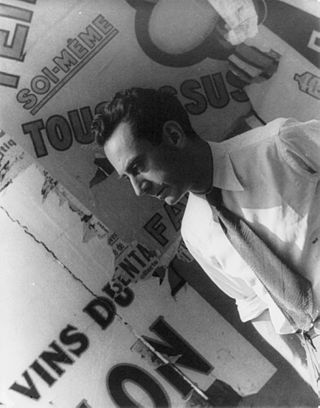
Man Ray was an American visual artist who spent most of his career in Paris. He was a significant contributor to the Dada and Surrealist movements, although his ties to each were informal. He produced major works in a variety of media but considered himself a painter above all. He was best known for his pioneering photography, and was a renowned fashion and portrait photographer. He is also noted for his work with photograms, which he called "rayographs" in reference to himself.

Elizabeth "Lee" Miller, Lady Penrose, was an American photographer and photojournalist. Miller was a fashion model in New York City in the 1920s before going to Paris, becoming a fashion and fine art photographer there. During World War II, she was a war correspondent for Vogue, covering events such as the London Blitz, the liberation of Paris, and the concentration camps at Buchenwald and Dachau.
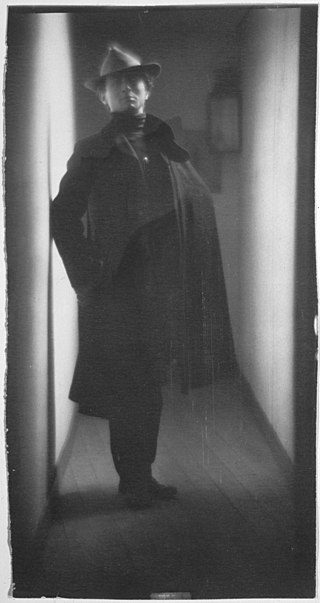
Edward Jean Steichen was a Luxembourgish American photographer, painter, and curator, renowned as one of the most prolific and influential figures in the history of photography.

Horst P. Horst was a German-American fashion photographer.
Irving Penn was an American photographer known for his fashion photography, portraits, and still lifes. Penn's career included work at Vogue magazine, and independent advertising work for clients including Issey Miyake and Clinique. His work has been exhibited internationally and continues to inform the art of photography.
Baron George Hoyningen-Huene was a fashion photographer of the 1920s and 1930s. He was born in the Russian Empire to Baltic German and American parents and spent his working life in France, England and the United States.

Fashion photography is a genre of photography that portrays clothing and other fashion items. This sometimes includes haute couture garments. It typically consists of a fashion photographer taking pictures of a dressed model in a photographic studio or an outside setting. It originated from the clothing and fashion industries, and while some fashion photography has been elevated as art, it is still primarily used commercially for clothing, perfumes and beauty products.

Fine-art photography is photography created in line with the vision of the photographer as artist, using photography as a medium for creative expression. The goal of fine-art photography is to express an idea, a message, or an emotion. This stands in contrast to representational photography, such as photojournalism, which provides a documentary visual account of specific subjects and events, literally representing objective reality rather than the subjective intent of the photographer; and commercial photography, the primary focus of which is to advertise products or services.

Antoinette Frissell Bacon, known as Toni Frissell, was an American photographer, known for her fashion photography, World War II photographs, and portraits of famous Americans, Europeans, children, and women from all walks of life.
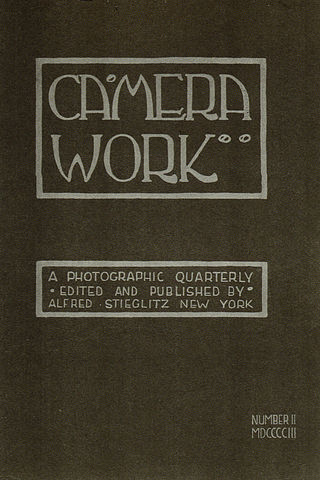
Camera Work was a quarterly photographic journal published by Alfred Stieglitz from 1903 to 1917. It presented high-quality photogravures by some of the most important photographers in the world, with the goal to establish photography as a fine art. It has been called "consummately intellectual", "by far the most beautiful of all photographic magazines", and "a portrait of an age [in which] the artistic sensibility of the nineteenth century was transformed into the artistic awareness of the present day."
Raymond Meier born in Switzerland in 1957, is a Swiss-American Photographer.
Paul Himmel was a fashion and documentary photographer in the United States.
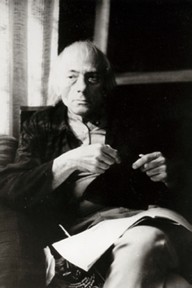
Louis Faurer was an American candid or street photographer. He was a quiet artist who never achieved the broad public recognition that his best-known contemporaries did; however, the significance and caliber of his work were lauded by insiders, among them Robert Frank, William Eggleston, and Edward Steichen, who included his work in the Museum of Modern Art exhibitions In and Out of Focus (1948) and The Family of Man (1955).
Graham Howe is a curator, writer, photo-historian, artist, and founder and CEO of Curatorial, Inc., a museum services organization supporting nonprofit traveling exhibitions. Curatorial Inc. manages the E.O. Hoppé Estate Collection and the Paul Outerbridge II Collection among others. Born in Sydney, Australia, Howe now resides in Los Angeles and London.
Richard Crump Miller was an American photographer best known for his vintage carbro prints, photos of celebrities, and work documenting the Hollywood Freeway.
Seymour Kattelson, better known as Sy Kattelson, was an American photographer whose earliest work documents working class New Yorkers during the years immediately following World War II. He was an early practitioner of street photography and was associated with the Photo League from 1947 until its closing in 1951. His portraits, frequently taken without his subjects' awareness while traveling through the streets or riding the city's subways, convey the dignity of their lives as lived in public places. The depth of his photographs often comes from the tension between the grittiness of their urban settings and the contemplative sense of his subjects' as being lost within themselves. He died in Rhinebeck, New York in November 2018 at the age of 95.
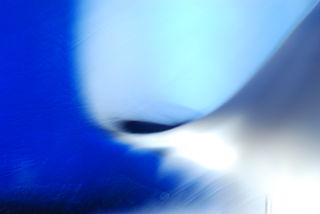
Abstract photography, sometimes called non-objective, experimental or conceptual photography, is a means of depicting a visual image that does not have an immediate association with the object world and that has been created through the use of photographic equipment, processes or materials. An abstract photograph may isolate a fragment of a natural scene to remove its inherent context from the viewer, it may be purposely staged to create a seemingly unreal appearance from real objects, or it may involve the use of color, light, shadow, texture, shape and/or form to convey a feeling, sensation or impression. The image may be produced using traditional photographic equipment like a camera, darkroom or computer, or it may be created without using a camera by directly manipulating film, paper or other photographic media, including digital presentations.

Robert Farber is an American photographer and lecturer known for his work with nudes, fashion, landscapes and still lives. He has published eleven books of original collections that have sold over half-a-million copies, four of them revised into later editions. He continues to exhibit classic and new work worldwide.
Carl Perutz (1921-1981) was a New York photographer who was active from the 1930s through the 1970s covering a wide range of subject matter and in the genres of street photography, photojournalism, portraiture, fashion and advertising.
Constantin Joffé (1910–1992) was a Russian / French / American fashion and advertising photographer who worked for the magazines Vogue and Glamor in the 1940s and 1950s, during their period of widest circulation.











